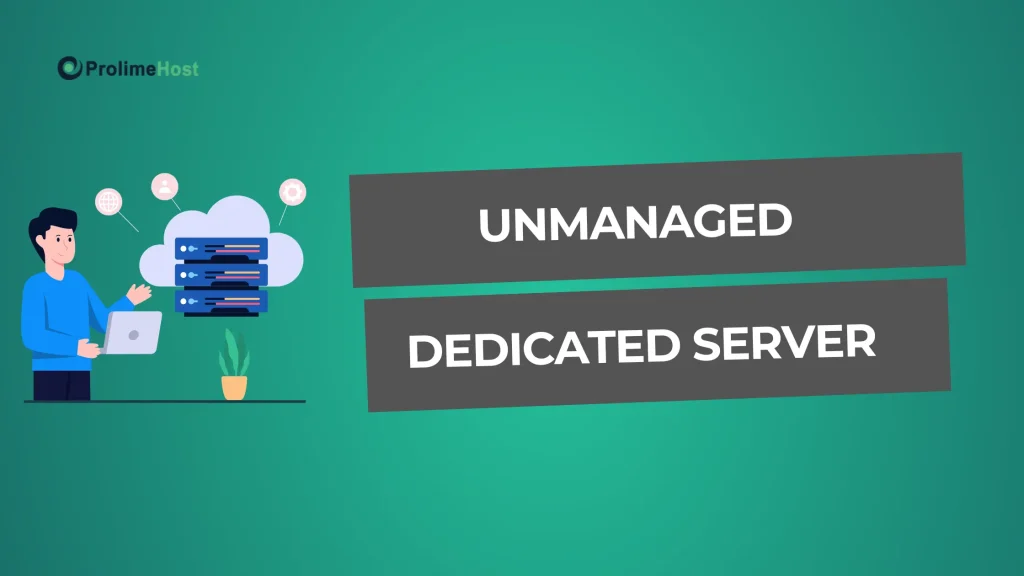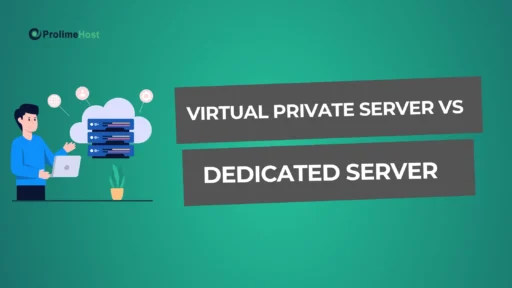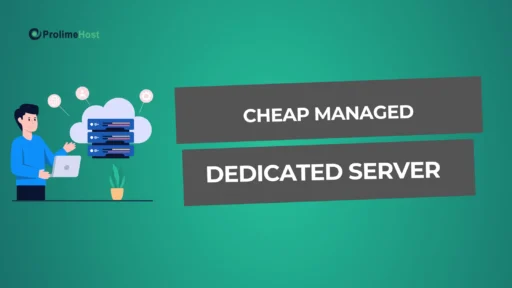
Thinking about getting serious with your hosting? You’ll want an unmanaged dedicated server. And ProlimeHost nails it.
This setup gives you full control. You run things your way. No one else touches your server. No shared space. No mystery problems from other users.
ProlimeHost offers raw power. Bare-metal servers. No fluff. Just speed, performance, and rock-solid stability.
It’s perfect if you know what you’re doing and want to tweak every part of your setup. You install what you want. You configure it how you like. You run the show.
Need help? Our team’s always around. 24/7 support means you’re never stuck for long.
Want hosting that doesn’t hold you back? Go with ProlimeHost’s unmanaged dedicated servers. Take full control. Build your stack your way.
TL;DR – 5 Best Unmanaged Dedicated Servers
Here’s a quick glance at what you’ll learn in this guide:
- ProlimeHost
- OVHcloud
- Liquid Web
- A2 Hosting
- InterServer
What is an Unmanaged Dedicated Server?
An unmanaged dedicated server is a hosting setup where you get full control over a physical server, but you’re responsible for everything from installation to maintenance.
Unlike managed hosting, where the provider handles server upkeep, security patches, and monitoring, unmanaged hosting puts the server in your hands.
Think of it like renting a workshop: the space is yours, but you bring your own tools and fix things yourself.
With unmanaged hosting, you handle tasks like:
- Installing the operating system (Linux, Windows, etc.)
- Configuring firewalls and backups
- Updating software and security patches
- Monitoring uptime, server load, and performance
This option is ideal for developers, system admins, and tech-savvy businesses that want:
- Full root access
- Custom software installations
- Complete environment control
- Reduced cost (compared to managed plans)
However, it’s not for everyone. If you lack server management experience or don’t have time to handle configurations and security, unmanaged hosting can be risky.
One misstep in updates or security could lead to downtime, or worse, a breach.
In short, unmanaged dedicated servers offer power and flexibility, but also come with higher responsibility. They’re best suited for users who want freedom without handholding and know exactly what to do with it.
If you’re confident in server management or have a tech team in place, this hosting model can save costs while giving you total control over your infrastructure.
How an Unmanaged Dedicated Server Works?
Here’s how an Unmanaged dedicated server works:
Once you rent an unmanaged server, the hosting provider provisions the hardware, installs the base operating system (if requested), and hands over root access. From there, you take the wheel.
You install the software, configure your environment, set up firewalls, manage backups, and monitor server performance.
This setup is perfect for developers, system administrators, or tech-savvy businesses that need:
- Full root-level access
- Custom server configurations
- Control over OS and software stack
- Minimal third-party interference
You decide when to apply updates, reboot the server, or troubleshoot issues. If you run a specific application that needs custom software, tuning, or ports opened, you’re free to optimize everything as you see fit.
But there’s a catch, you’re responsible for everything. If something breaks, there’s no managed support unless you hire your own sysadmin or rely on third-party help.
That said, unmanaged dedicated servers offer unmatched freedom, performance, and cost-efficiency, as long as you have the expertise or team to manage it.
In short: if you want control without compromises and have the skills to manage a server from the command line, unmanaged hosting gives you a clean slate to build whatever you need.
Difference Between Managed and Unmanaged Dedicated Servers
When choosing a dedicated server, one key decision is whether to go managed or unmanaged. The difference comes down to control, responsibility, and convenience.
In a managed dedicated server, the hosting provider handles all technical tasks for you, server setup, software updates, security patches, backups, and monitoring.
It’s like having a dedicated IT team without the hiring hassle. This is ideal for businesses that want peace of mind, don’t have in-house expertise, or need 24/7 support to avoid downtime.
On the flip side, an unmanaged dedicated server gives you total control. You get a raw machine and full root access, but you’re responsible for everything, installing the OS, configuring the server, managing updates, and securing the environment.
It’s best suited for developers, sysadmins, or businesses with strong technical teams who want customization and cost savings.
Let’s break it down:
| Feature | Managed Server | Unmanaged Server |
| Server Management | Fully handled by provider | Fully handled by you |
| Technical Skill Needed | Minimal | High |
| Support | 24/7 expert support | Limited or none |
| Customization | Limited by host policies | Full freedom |
| Cost | Higher (for support/service) | Lower (but time-intensive) |
In short:
- Choose managed if you want simplicity and support.
- Go unmanaged if you want control and can handle the technical side.
Pros and Cons of Unmanaged Dedicated Servers
Unmanaged servers give full control. Great for tech-savvy users. But they also need serious skills and time to manage.
Pros:
Full Control – You handle the OS, apps, and security.
Lower Cost – You pay only for the server, no management fees.
Root Access – Total admin access with no limits.
Custom Performance – Tweak everything to match your needs.
Cons:
High Skill Needed – You must know server setup and management.
Time-Heavy – Maintenance, updates, and fixes are on you.
Easy to Mess Up – One wrong move can cause downtime or data loss.
No Support – You’re on your own unless you hire help.
Key Features to Look For in an Unmanaged Dedicated Server

Choosing an unmanaged dedicated server gives you full control but that also means you must carefully evaluate the features before committing. You’re not just picking a machine; you’re choosing the backbone of your online operations.
Here’s what matters:
Root Access and Full Control
Ensure the server gives you complete administrative rights. This allows you to install your preferred OS, deploy custom applications, and modify server settings at the core level.
High-Performance Hardware
Look for SSD storage, high CPU clock speeds, and ample RAM. These directly affect site speed, app responsiveness, and database handling, especially during peak traffic.
Network Uptime & Redundancy
Unmanaged doesn’t mean unreliable. Go for a provider offering at least 99.9% uptime, multiple ISPs, and redundant power/network setups to keep your site consistently online.
Security Configurability
While you handle security yourself, your server should support advanced controls like firewall configuration, DDoS protection, and custom SSL installations.
Scalability Options
Even unmanaged servers should offer upgrade paths. You don’t want to migrate everything from scratch when you grow—just scale up storage or processing power seamlessly.
Remote Access & Monitoring
SSH access, remote reboot, and real-time monitoring tools are essential to maintain control without relying on external support.
Transparent SLA & Support Clarity
Even if it’s “unmanaged,” some level of emergency support or ticketing access helps during critical failures.
Choosing the right unmanaged server means balancing performance, control, and cost, without sacrificing future flexibility.
How to Choose the Best Unmanaged Dedicated Server Provider
Don’t just look at specs. Focus on performance, control, and long-term value. Here’s what to check:
Know your Use Case
Are you hosting a busy site, SaaS app, or something complex?
Match the server power to your real needs.
Check the Specs
- Intel Xeon or AMD EPYC CPUs
- SSD or NVMe storage
- High RAM and bandwidth. Make sure it can scale when traffic grows.
Pick the Right Server Location
Closer servers = faster speeds.
If you serve global users, go with a provider that has multiple data centers.
Root Access is a Must
You need full control to install and manage anything.
No root = not truly unmanaged.
Uptime and Network Reliability
Only go with hosts that offer 99.9% uptime or better.
Check customer reviews and uptime reports to be sure.
Emergency Support Options
Even unmanaged servers need help sometimes.
Pick a provider with 24/7 emergency support, even if it’s paid.
Clear Pricing and Extras
Watch for hidden fees.
Look for optional add-ons like backups, DDoS protection, and extra IPs.
5 Best Unmanaged Dedicated Servers
You need strong performance, high uptime, and clear value when managing the server yourself. Here are the top 5 unmanaged dedicated server providers to consider:
ProlimeHost
ProlimeHost gives you total control, strong performance, and flexible configurations.
You get root access, OS options, and hardware tailored to your workload.
Why Choose ProlimeHost?
- Hosts servers in the US
- Optimizes hardware for speed and uptime
- Offers 24/7 expert support, even on unmanaged plans
- Lists transparent prices with no hidden fees
- Deploys servers fast and includes dedicated IPs
OVHcloud
OVHcloud provides affordable unmanaged servers with strong bandwidth.
They include DDoS protection, solid security, and global network coverage.
If you serve users worldwide, OVHcloud keeps latency low and performance steady.
Liquid Web
Liquid Web offers unmanaged bare metal servers with SSD storage and enterprise-grade CPUs.
You get top-tier reliability without managed service costs.
It’s a strong choice for tech teams who want consistent performance.
A2 Hosting
A2 Hosting focuses on speed and developer flexibility.
They give you root access, fast hardware, and tools built for technical users.
If you need quick performance and hands-on control, A2 fits well.
InterServer
InterServer delivers reliable unmanaged servers at low prices.
You can customize the setup while staying within budget.
They offer a great entry point for businesses needing dedicated hardware.
How to Set Up an Unmanaged Dedicated Server From Scratch
Here’s how to do it, step by step, without getting overwhelmed:
Pick Your Hardware
Start with what matters most: performance. Choose a processor, RAM size, storage type (SSD is faster), and bandwidth based on what your site or app actually needs. Hosting a high-traffic site? Go big on CPU and RAM.
Choose Your OS and Control Panel
Install a Linux distro like Ubuntu or CentOS, or go with Windows Server if needed. If you’re comfortable with command line, you can skip the panel. Otherwise, use cPanel or Webmin to simplify things.
Lock Down Security First
Before you do anything else, secure the server. Disable root login, create a new user, set up SSH keys, install a firewall (like UFW), and limit open ports. Don’t skip this step, it’s your first line of defense.
Install What You Need
Now add the essentials: web server (Apache or Nginx), database (MySQL, MariaDB), PHP, Node.js, whatever your stack requires. Use package managers like apt or yum to speed things up.
Set Up Backups
Automate daily or weekly backups using tools like rsync or R1Soft. Store them on a separate server or in the cloud. You’ll thank yourself later.
Monitor and Maintain
Use tools like Netdata or Zabbix to track CPU, memory, and disk health. Update software regularly and patch vulnerabilities as soon as they’re discovered.
Tips to Secure an Unmanaged Dedicated Server

An unmanaged dedicated server gives you complete control, but that freedom comes with responsibility, especially when it comes to security. If you’re managing your own server, securing it isn’t optional, it’s critical.
Here are crisp, actionable tips to help you lock down your unmanaged dedicated server:
Keep Everything Updated
Outdated software is a hacker’s playground. Regularly update your OS, control panel, CMS, and applications to patch vulnerabilities before attackers exploit them.
Use Strong Authentication
Ditch default logins. Set complex, unique passwords and enable SSH key authentication. Restrict root access and create user-specific accounts with minimal privileges.
Configure a Firewall Immediately
Deploy a firewall (like UFW or iptables) right after setup. Block all unnecessary ports and only allow the ones your services actually use.
Run Security Scans & Malware Checks
Use tools like ClamAV, rkhunter, or Malware Detect to scan your server regularly. Automate the scans and set up alerts to detect suspicious behavior early.
Limit Access by IP
Enable IP whitelisting for SSH and control panel access. Only you (or your team) should have access, keep the rest of the world out.
Set Up Daily Backups
Always assume the worst. Set up automated, off-site backups for your data and configurations. This makes disaster recovery quick and painless.
Monitor Logs & Set Alerts
Use tools like Fail2Ban and Logwatch to keep an eye on login attempts and suspicious activity. Real-time monitoring helps you stop attacks before damage is done.
Disable Unused Services
Every open service is a potential entry point. Remove or disable default services and apps you don’t use. Keep your server lean and locked down.
Frequently Asked Questions (FAQs)
What is the Cost of an Unmanaged Dedicated Server?
Unmanaged dedicated servers are generally more affordable than managed ones. Prices typically start from $80 to $150 per month, depending on the hardware, bandwidth, and data center location. Since you handle setup and maintenance, you save on management fees.
Can a Beginner Use an Unmanaged Dedicated Server?
Technically, yes, but it’s not ideal. Beginners may struggle with server setup, OS configuration, security hardening, and software installations. Without prior experience or a sysadmin background, there’s a steep learning curve. A managed server or VPS might be a better starting point.
Is an Unmanaged Dedicated Server Good for Gaming?
Yes, if you know what you’re doing. Unmanaged dedicated servers offer the raw power and low latency needed for hosting game servers (like Minecraft, Rust, or ARK). However, you’ll need to handle everything from server setup to DDoS protection yourself.
What are the Risks of Using an Unmanaged Dedicated Server?
The biggest risks include:
- Security vulnerabilities if you don’t configure firewalls, patches, or malware protection
- Data loss without proper backup setups
- Downtime from misconfigurations or delayed troubleshooting
- Poor performance due to unmanaged updates or lack of monitoring
Conclusion
Unmanaged servers give you full control but you take on the risk too. Skip the basics or choose the wrong provider, and you face downtime, lost data, or slow performance.
You don’t just need a server. You need a plan.
ProlimeHost Gives You a Solid Start. We give you fast, secure, and flexible infrastructure that’s built to perform.
You stay in control without paying extra for managed services you don’t need.
Perfect for:
- Scaling apps and growing traffic
- Custom stacks and dev environments
- Projects that need speed, uptime, and root access
Why You Should Save This Guide
This isn’t a one-time walkthrough. It’s your quick-access reference for anything unmanaged hosting.
- Need to redo setup? Use the step-by-step.
- Want better security? Jump to the hardening section.
- Comparing hosts? Check the list, ProlimeHost leads for good reason.



